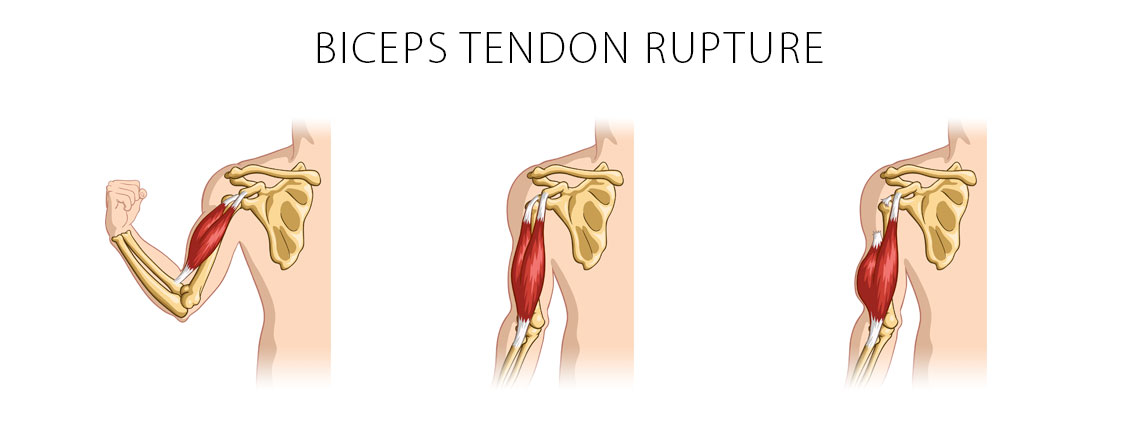
Biceps Tendon Rupture
Overview
Your biceps are muscles located on the front of your arm close to the shoulder. Held in place by tendons (strong fibrous tissue), your bicep is attached to the shoulder and elbow bone. While it’s not common, only three to five people per 100,000 have a biceps tendon rupture each year; some patients experience a bicep tendon tearing away from the bone at the elbow. Men predominately experience this injury while women rarely experience it.
If this is you, you may be able to still bend your arm at the elbow but might find it difficult to turn your hand from palm up to palm down. In order to see your full range of motion return, you will likely have to undergo surgery since the bicep tendon doesn’t naturally grow back to the bone and heal on its own.
There are two types of tendon ruptures that can occur: the first is a partial tear which is soft tissue damage and the second is a complete tear. A complete tear is when the tendon is completely detached from the bone. You might have experienced this injury if your arm was bent and forced straight. The best example is if you tried to move a heavy box without knowing the weight of the box. As you try to hold the box but your arm straightens, this causes the tendon to tear away from the bone.
You might be at an increased risk if you smoke since nicotine can affect the strength and quality of your tendon. You might also be at risk if you use corticosteroids. Corticosteroids treat disorders like asthma, arthritis, skin conditions, and autoimmune diseases. These have been linked to tendon weakness.
If you have a bicep tendon rupture you might experience bruising in the elbow and forearm, weakness when bending the elbow or twisting the forearm, a knot or bump in the upper arm from the recoiled bicep muscle, swelling in your elbow, and a gap in the front of the elbow where your tendon should be. You might have also noticed a “pop” when the elbow tendon ruptured. Your pain was likely severe at first and then subsided after a week or more.
Nonsurgical Treatment Options
If you experienced a partial rupture several options are:
- Rest. Avoid lifting anything over your head. This rest may relieve pain and limit swelling.
- Anti-Inflammatory Medicine. Through the use of an anti-inflammatory like ibuprofen or naproxen, you can reduce pain and swelling.
- Physical Therapy.At-home exercises can help strengthen your muscles. These exercises will help restore range of motion and movement to your daily life.

